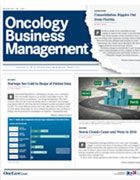T Cells Move Into the Fast Lane
Over the past 30 years, I have regularly attended annual meetings of the American Society of Hematology, where experts from around the globe convene to share the latest advances.
Andrew L. Pecora, MD
Over the past 30 years, I have regularly attended annual meetings of the American Society of Hematology (ASH), where experts from around the globe convene to share the latest advances. In most years, the advances involve only small improvements over standard-of-care. Reliably, some provocative science is presented that points to future trials that might lead to new roads forward in care. Every so often, the science and clinical results coalesce into a palpable wave of improvement and excitement.
Such a revolution may be a long time in the making. During the past two decades, mostly small or only modestly larger groups of people have come together to discuss basic science observations that indicated a possibility that a person afflicted with a hematologic malignancy might have the natural history of their disease positively altered by manipulation of the immune system. The journey started by focusing on using the immune system of a related donor and then unrelated donors to induce remissions. But this was possible only after very toxic therapy was given to prepare the recipient to accept stem cells or bone marrow from another to reduce the tumor burden. Many problems arose as a consequence of the intense preparative therapy and the tendency of the donor cells to reject the new host and attack and kill healthy tissue (graft versus host disease). The expense of this approach ranged from several hundred thousand dollars to, at times, over $1 million. Surprisingly, the cost was readily accepted by commercial and governmental payers because it offered the only opportunity to cure an otherwise fatal disease, as imperfect as the approach was.
2016 brought a game changer. After decades of discovery and trial-and-error, along came a new approach that targeted the cause of tumor escape from immune surveillance. Despite being rejected by early critics, clinical trial results presented at the 2016 ASH meeting showed unequivocally that this new approach of applied immunology can change the natural history of an otherwise fatal disease. Remarkably, no toxic induction therapy is required for the new approach to work and there is no need for a foreign immune system. By taking the brakes off the T cells of patients suffering with cancer, their own immune systems become capable of recognizing and killing the cancer cells, resulting in long-term responses and potential cures.
2016 ASH turned the page on applied immunology, moving us from the classic paradigm of allogeneic transplant to a new era of therapy that has the same intent but is much less toxic and potentially less expensive. Only time will tell how widely applicable the new approach will be.




